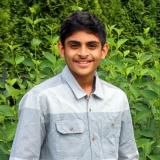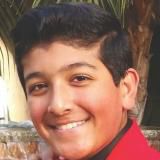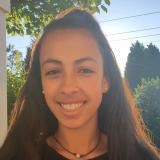The five finalists are Meghna Behari of Marshall Middle School in Sewickley, Pa.; Mrinali Kesavadas of Mahomet-Seymour Jr. High School in Mahomet, Ill.; Sara Makboul of Palmer Middle School in Acworth, Georgia; Rohit Mital of West Middle School in Rochester Hills, Mich.; and Rohan Wagh of Stoller Middle School in Portland, Ore. have been named as this year’s finalists in the 3M Young Scientist Challenge by The Discovery Education Network.
Students from grades 5-8 were invited to create a one- to two-minute video describing a new, innovative solution that could solve an everyday problem. Ten finalists were chosen for their passion for science, spirit of innovation and ingenuity, and effective communication skills.
After learning how difficult it is to analyze the quality of hard to reach water sources, Behari created a device to help access hard to reach waterways. Monitoring temperature, conductivity and pH levels, she hopes to revolutionize the way scientists conduct research in the future.
Kesavada’s low cost CPR simulator aims to help save lives in underdeveloped countries. The simulator is made of low cost materials, is portable and also has the capability to run a computer based program to provide instant feedback to the user to assure that they are performing CPR in the correct way.
Makboul invented Nano Cellulose Beads to counteract storm water pollution in an effort to improve the quality of water. She plans to create her invention by using the absorbent cellulose that will be extracted from leaf remains. Combined with sodium polyacrylate and once dispersed on land, excess storm water runoff can be absorbed to decrease the amount of pollution and improve water quality.
Wanting to eliminate untimely deaths due to air pollution, Mital invented a device to control pollution from diesel automobiles by optimizing particulate filters. Through researching filter cell designs, he found that his invention not only has the capability to save 250 million gallons of fuel per year, but also reducing particulate matter and saving lives all around the world.
Wanting to eliminate energy poverty in underdeveloped countries, Wagh invented a new method to increase the efficiency of a microbial fuel cell. He believes his invention, which is compact sized and low maintenance, can be distributed and used all around the world.
Each national finalist earns an exclusive summer mentorship with a 3M scientist to complete a summer “innovation†assignment. Together they will work virtually through pre-assigned objectives with resources and support provided by Discovery Education and 3M.
In the fall, ten finalists will receive a trip to St. Paul, Minnesota, during which they will present their completed "innovation" to a panel of judges. In addition, they will compete in a series of scored scientific challenges during the live event.
Finalists will be judged on their scientific problem solving, innovation and ingenuity, and communication skills.
The highest scoring finalist earns the title America’s Top Young Scientist and wins $25,000 and a once-in-a-lifetime opportunity to attend a taping of a Discovery Network show.









